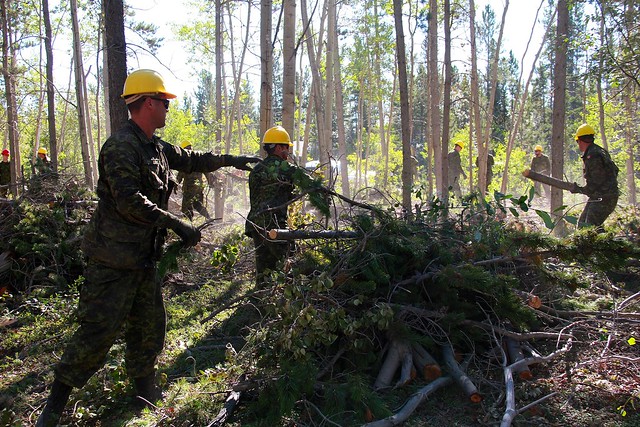13th September 2013 Ottawa, Canada
Operation NANOOK – firefighting in the Yukon
So what brings a Royal Navy Commander to Canada’s Yukon territory in the middle of summer?
The answer is Operation NANOOK – an annual cross-government operation which supports Canada’s commitment to ‘The True North Strong and Free’.
Involving hundreds of members of the Canadian Armed Forces and representatives of many other government departments, this year’s exercise focused on defending the City of Whitehorse from a forest wildfire.
Invited along as the official UK observer on the operation, this gave me a great opportunity to watch the sterling efforts of the Canadian Forces and Yukon Emergency Services.

The largest city in Canada’s north, Whitehorse is surrounded by forest. When you approach by air you truly appreciate that it is an island of humanity beset by wilderness and that wilderness in the middle of August becomes a tinderbox.
Forest fires are common in the Yukon and are on the whole part of the natural cycle of forest regeneration, the courageous men and women of the Yukon Protection Services Wildland Fire Management Division deal with them routinely throughout the summer months in the remote regions of the territory.
But fighting a fire which is threatening a city of over 30,000 citizens can be overwhelming for even the most experienced forest fire fighting crew.
Thankfully they can count on a little help from the guys and girls who know a little about putting themselves into harm’s way in defence of their country, the Canadian Armed Forces. Whilst the soldiers, sailors and airmen know how to provide firepower to defeat an enemy, how do they learn to fight an enemy when it is a fire?

Operation NANOOK provided them with the opportunity to learn from some of the best forest fire fighters in the world. At short notice 500 soldiers from the Land Force Quebec Area, under the command of Brigadier-General Jean-Marc Lanthier, travelled the 2632 miles from Montreal to Whitehorse, a distance slightly more than London to Baghdad; put down their rifles and picked up axes and hoses. Under the guidance of firefighters they were able to set up a protective screen around the city within a matter of hours.
The command and control for the operation was provided by a group of 50 personnel from Joint Task Force North based out of Yellowknife and the Royal Canadian Air Force provided the vital air support with helicopters to move men and equipment quickly around the city and huge C17 Globemasters to move them quickly from all parts of the country.
In the end, Operation NANOOK was a complete success and showed the citizens of Whitehorse that their armed forces stand by not only to defend them from potential foes but are ready to assist when the foe is the magnificent wilderness which is their backyard.